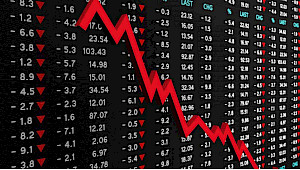Do you know where your pension money is invested? It's largely not Canada — and that’s a problem
March 20, 2024Originally published in The Toronto Star on March 12, 2024 as contributing columnist
If you don’t believe in yourself nobody else will.” — Kobe Bryant
Is Canada inherently unappealing to investors, leading our own pension funds to allocate only a minimal portion of their investments in our own country? Or have our institutions just become lazy, not bothering to seek out opportunities, finding it less effort to invest in index funds and long-term government bonds and shipping the balance of their capital to offshore opportunities.
According to a recent Bank of Montreal report, foreign investors divested $48.7 billion in Canadian equities in 2023. It’s the largest annual exodus of investment Canada has ever witnessed.
It’s vitally important that we answer these questions. Our future prosperity depends on investment, both foreign and domestic — investment we are currently not attracting. If we don’t right this ship, our country will sail into the backwaters of the global economy, becoming nothing but an afterthought on the radar of investors everywhere.
Back in the 1980s and ‘90s, Canadian pension funds committed 80 to 90 percent of their assets to investments in Canada. Fast forward to today, and that figure has drastically fallen to just 25 percent. Even more telling is that almost two-thirds of those holdings are invested in long term government bonds.
Twenty years ago, our pension funds had 28 percent invested in Canadian public companies, a figure that has now dwindled to less than three percent. Perhaps, most strikingly, our pension funds have more invested in China than in our own public companies. We are helping other economies grow and prosper, creating jobs overseas, while our economy languishes from lack of investment. LetkoBrosseau Global Investment Management offers a deeper understanding on investing in Canada in a report on their website.
Our pension funds have a combined $3 trillion under management. I wonder how many pension beneficiaries know where their money is invested and, more importantly, where it’s not invested. Canadian investments do not just affect pension portfolios; they also have a considerable impact on Canada’s economy: Generating jobs, improving incomes, and increasing contributions to retirement plans. Millions of Canadians have contributed part of their wages earned from Canadian jobs to fund their pensions. It is only natural that they would want a respectable portion of these savings to help improve our own economy.
Of course, pension fund executives respond to this criticism by stating that their sole mission is to maximize returns and that to achieve that goal they must be free to invest wherever they want. I have several issues with that response. Firstly, consider how Canada has performed since our pension funds curtailed their investments at home. Canada’s gross domestic product (GDP) per capita has fallen from 95 percent of U.S. GDP per capita in 1980 to 72 percent in 2023. Why? In part, because non-residential investment per worker in Canada is less than half that of the United States.
For every dollar Canadians invest in start-ups, the U.S. invests $40. Canada needs investments to reverse these disturbing trends in order to improve productivity and stay competitive and retain home-grown talent that increasingly migrates to the U.S. It’s no wonder our institutions have shifted much of their focus south of the border; more investment means more growth and innovation which leads to greater wealth.
Patriotism aside, there are several market-related dynamics that are rapidly changing, thereby making the current pension fund investment strategy outdated.
We are living in inflationary times. Last year’s inflation spike won’t be the last. Inflation will return in waves, much like the 1970’s and probably worse, given all the government debt and money printing we have witnessed in the past 15 years. Long term government bonds have been the worst performing asset class of late, almost guaranteeing a loss in real terms.
Too much investment in murky private equity
Pension funds also have too much invested in private equity (PE), an asset class whose value is difficult to pin down. Canadian pension funds moved from public equities to private equities due to regulations that made valuation of portfolios ever more frequent. By moving away from public equities (which can be valued daily) to private equities, pension funds avoided short term volatility mark downs in their portfolios. Valuations in PE are opaque and true price discovery only happens when one liquidates the holding, sometimes with nasty surprises.
The laziest form of investing is to buy index funds or ETF’s, a current favourite of many investors, including our own pension funds. It’s almost as lazy as clipping coupons on government bonds. By virtue of buying entire markets or market sectors versus individual stocks, index funds perpetuate distortion in price discovery and generally move valuations higher than they should be. The index doesn’t care what price it’s paying, which might be an accident waiting to happen.
Lastly, the “China trade” is a trade whose due date has passed. Although China will continue to grow and soon become the number one economy in the world, the boom years are clearly over. China’s stock market is plummeting, and the government is desperately implementing measures to slow the slide.
Their property market is literally imploding after years of overbuilding. There is way too much debt in the shadow banking sector which will take years to unwind. For the time being, investors should close China trade, which attracted so much foreign investment, including billions in Canadian pension money.
Interestingly, Australian pension funds demonstrate a strong commitment to their domestic economy—a market akin to ours—by allocating 60 percent of their investments locally. This strategy yields returns comparable to those of Canadian pension funds, effectively challenging the claim by our pension fund executives that prioritizing national investment compromises performance.
Redirecting money home can boost resource sector
The urgency for Canadian pension funds to refocus on domestic investments has never been more critical, particularly within our resource sector, including both energy and minerals. Not only are we facing de-globalization, but we are also experiencing a global bifurcation of those countries with commodities and those without.
Countries around the world are looking inwards, both hoarding their own natural resources or scrambling to secure resources from others. It’s a resource war in the making and the price of those commodities will go a lot higher in the coming decades. As Zoltan Posner of Credit Suisse puts it, “our commodity, your problem”.
Canada is richly endowed with energy and metals. All we need is the capital to develop those resources. Redirecting pension funds back home to fuel this sector is not just strategic but imperative.
Investment opportunities exist in many countries, and I believe that pension funds should be free to invest anywhere in the world. That said, pension funds should redouble their efforts to increase investments in Canada. This should not be feared but rather embraced with enthusiasm. Without government sponsorship and considerable tax assistance, pension funds would not exist. Government has the right, the responsibility, and obligation to regulate how this savings regimes operates.
Increasing long-term investments in Canada must be a national priority. It’s a natural fit for pension funds that also take a long-term approach when investing. Canadian pension fund beneficiaries should insist that federal and provincial governments amend the rules governing pension funds to facilitate a greater focus on Canadian assets. Moreover, pension funds themselves need to staff up with experienced portfolio managers and analysts that are well-versed in Canadian public equities.
This isn’t just an economic strategy; it’s a vision for securing Canada’s prosperity and a call to action for leadership that not only anticipates but actively shapes our economic future.










